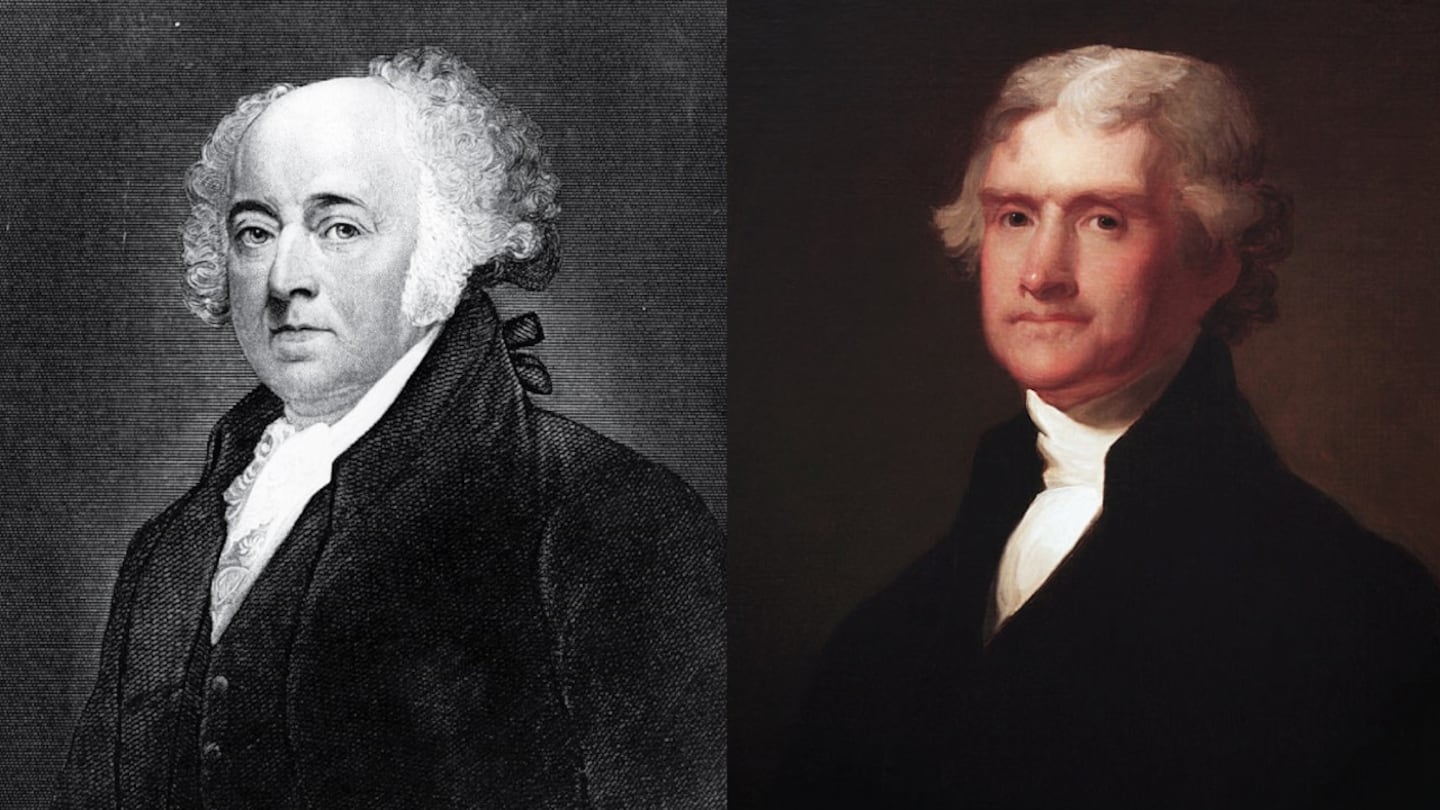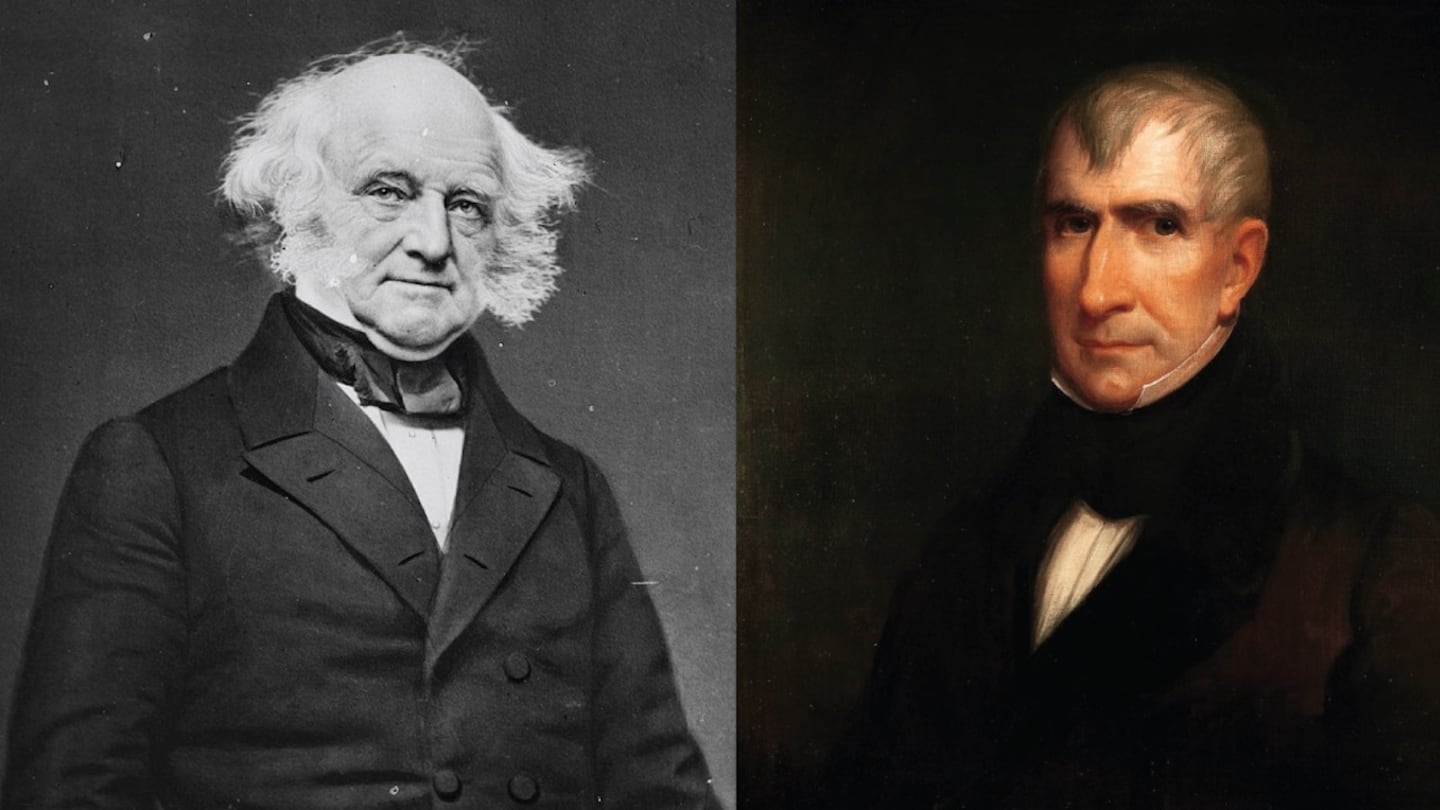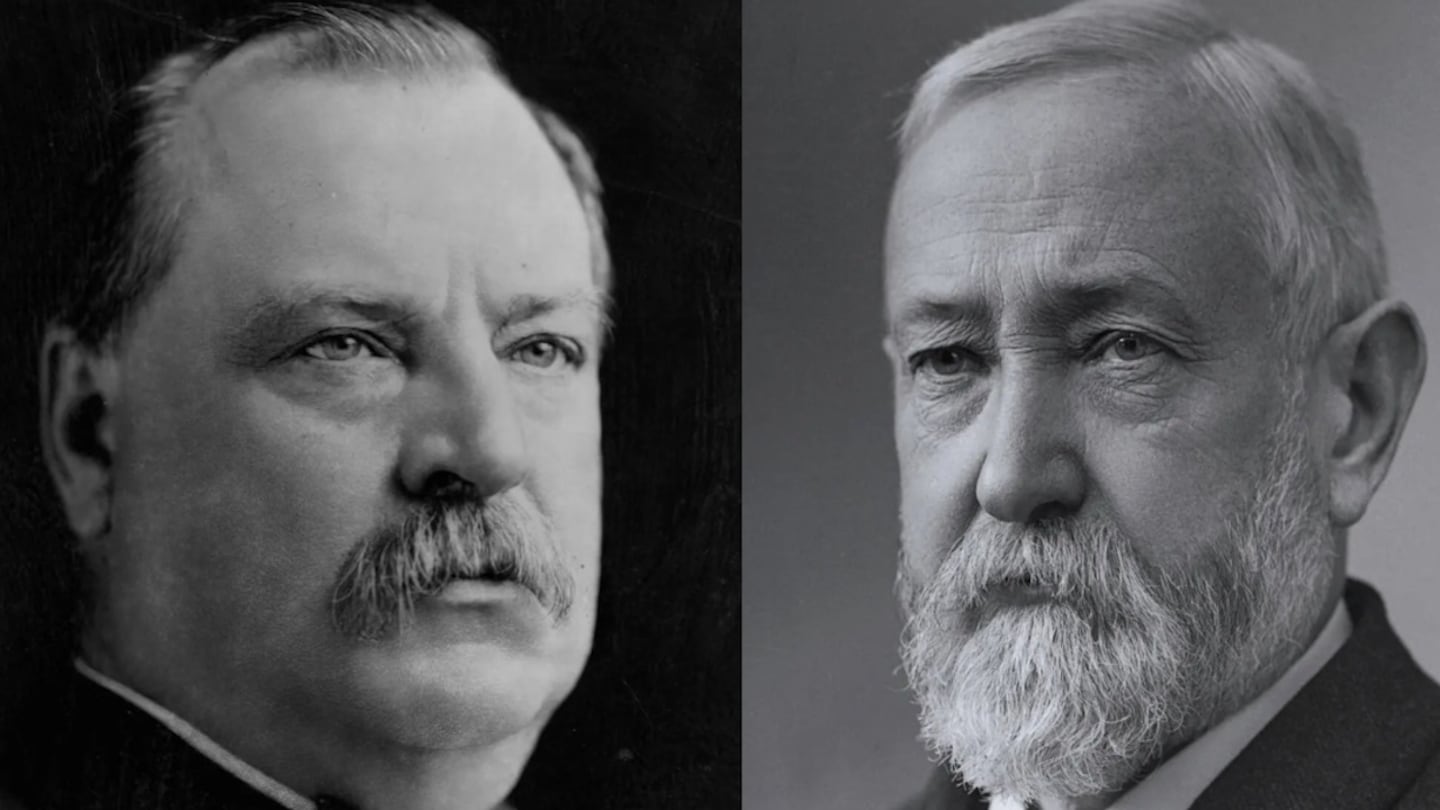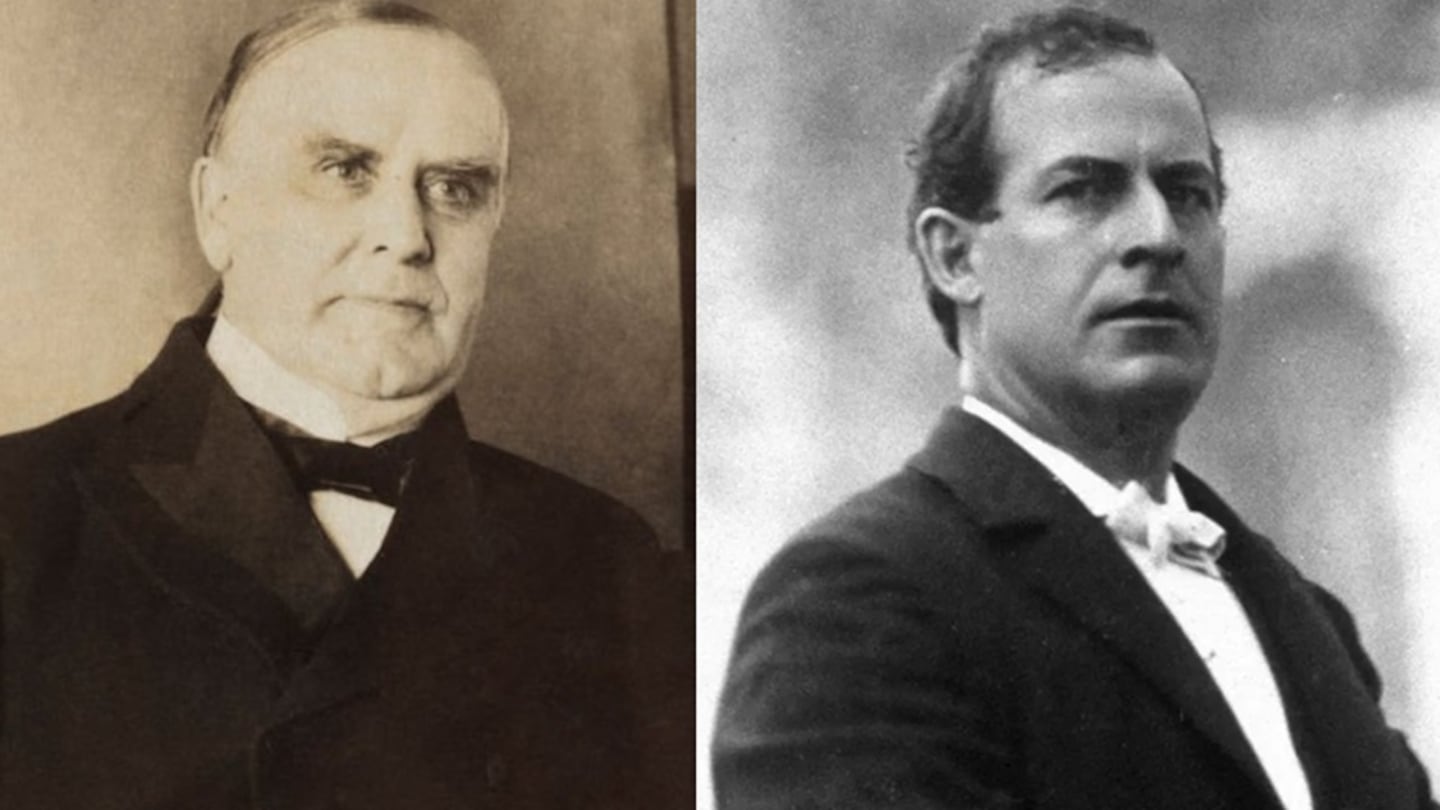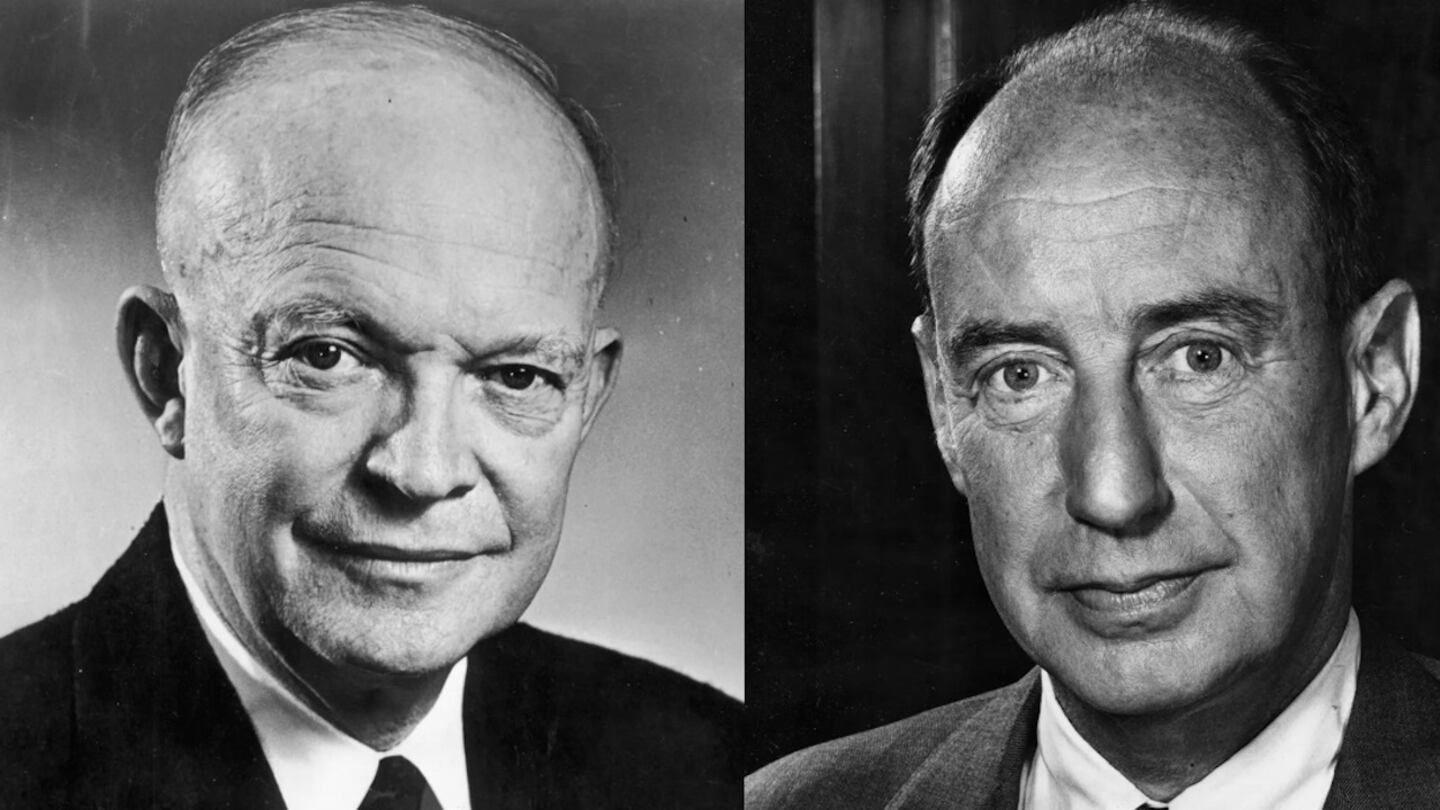For the first time since 1956, American voters are facing a presidential rematch.
Joe Biden and Donald Trump, who opposed each other for president in 2020, secured enough delegates on Tuesday night to clinch their respective parties’ nominations for the 2024 election. Four years ago, Trump was the incumbent. This year the scenario is reversed, as Trump is attempting to become the first president since Grover Cleveland to win non-consecutive terms.
Cleveland achieved the feat in the election of 1892.
The last time two candidates met in back-to-back presidential elections was when Dwight D. Eisenhower defeated Adlai Stevenson in 1952 and 1956.
Biden and Trump are reviving that presidential rivalry with the seventh rematch in U.S. history. The first four rematches saw the incumbent lose, while in the last two the sitting president remained in the White House for a second term.
Here is a look at the previous times presidential candidates have squared off in consecutive election cycles.
John Adams vs. Thomas Jefferson
The two Founding Fathers participated in the United States’ first actively contested presidential election in 1796, according to the Pew Research Center. It was also the first and only time that a president and vice president would come from different parties.
That quirk occurred because under Article II of the Constitution, each presidential elector cast two ballots. The candidate receiving the most ballots would become the president, while the runner-up would become the vice president.
George Washington had won the first two presidential elections in U.S. history, in 1788 and 1792, but he announced he would not seek a third term.
In 1796, Adams won 71 electoral votes for the Federalists while Jefferson, representing the Democratic-Republicans, had 68, according to the website 270 to Win.
However, the framers of the Constitution did not anticipate the birth of political parties. And in 1800, a hotly contested election “revealed a constitutional flaw, and was ultimately just a chaotic mess,” political historian Matt Dallek, a professor at George Washington University, told WTOP Radio.
In the 1800 election, Jefferson defeated Adams in the Electoral College by a 73-65 margin. The problem was that Jefferson’s running mate, Aaron Burr, also had 73 votes, causing a tie.
That threw the election into the outgoing House of Representatives, which was still controlled by Federalists. The House remained deadlocked for a week until choosing Jefferson on the 36th ballot.
That led to the passage of the 12th Amendment, which was ratified to require separate balloting for president and vice president.
“They shall name in their ballots the person voted for as President, and in distinct ballots the person voted for as Vice-President,” the amendment reads.
John Quincy Adams vs. Andrew Jackson
John Adams’ son, John Quincy Adams, was involved in a messy four-way election in 1824 that was decided in the House of Representatives.
None of the candidates received a majority of electoral votes. Jackson led with 99 electoral votes and won the popular vote. Adams, meanwhile was the runner-up with 84 electoral votes and also was second in the popular vote. William H. Crawford (41 votes) and Henry Clay (37 votes) rounded out the field.
The decision was left to the House, The New York Times reported. Jackson claimed that Adams had struck a “corrupt bargain” with Clay, the Speaker of the House, enabling him to win the election. Adams then appointed Clay as secretary of state, adding fuel to the fire that a backroom deal had been made, according to the Pew Research Center.
Jackson immediately began a campaign to run again in 1828 and won easily. He prevailed in the Electoral College by a 178-83 margin and won 56% of the popular vote to become the first president from west of the Appalachians. The Jacksonians banded together to form what became the Democratic Party.
“The sense was that basically, Adams had been manipulative and really, they vowed revenge,” Dallek told WTOP.
That led to a particularly nasty campaign of personal attacks. According to the University of Virginia’s Miller Center, Jackson was accused of being bloodthirsty and an adulterer, while Adams was accused of corruption and facilitating prostitution.
Dallek compared the complaints of Jackson and his supporters to those of Trump, who still maintains that the 2020 election was stolen.
“This idea that the other side, if not literally … there’s a sense that they figuratively stole power or that, somehow, power was seized from them,” Dallek told the radio station.
Martin Van Buren vs. William Henry Harrison
Jackson’s successor, Martin Van Buren, framed his campaign for the election of 1836 as a continuation of Old Hickory’s policies. According to the Miller Center, Van Buren was nominated on the first ballot of the convention by a unanimous vote.
His opponent, William Henry Harrison, was part of the fledgling Whig Party. The new political party was formed from a wide range of members with different ideologies and represented different regions of the country, The Hill reported. Other than opposing Jackson, the Whigs were not a unified group.
To emphasize the point, the Whigs had three regional candidates -- Harrison, who represented the West; Hugh White, a U.S. senator from Tennessee who represented the South; and Daniel Webster, who represented the East. U.S. Sen. Willie P. Mangum of North Carolina, ran as an independent
Van Buren won easily, winning the Electoral College by a 170-73 margin. The became the last vice president to become president via election (and not by the president’s death) until 1988, when George H.W. Bush succeeded Ronald Reagan.
But Van Buren’s term was torpedoed by the Panic of 1837 and a severe financial depression, the Times reported.
In 1840, the Whigs became unified and Harrison was elected easily with a 234-60 electoral majority. Unfortunately for the party, Harrison would die 32 days into his term in 1841 -- the first president to die in office.
Grover Cleveland vs. Benjamin Harrison
Harrison’s grandson, Benjamin Harrison, defeated incumbent Grover Cleveland in the 1888 presidential election. Cleveland had been the first Democrat in the White House since James Buchanan (1857-61).
Cleveland, who narrowly defeated the “Plumed Knight,” James G. Blaine, in 1884, won the popular vote again in 1888. But Harrison won the Electoral College 233-168 despite losing the popular vote by more than 100,000. Tariffs were the key issue, with Harrison and the Republicans favoring high protective tariffs while Cleveland preferred lower tariffs, according to the Pew Research Center.
According to C-SPAN, Cleveland’s wife, Frances Folsom Cleveland, famously promised the White House staff that she would be returning in four years.
“I want you to take good care of all the furniture and ornaments in the house, and not let any of them get lost or broken,” she said. “For I want to find everything just as it is now, when we come back again four years from today.”
Her prediction proved accurate, as Cleveland won the election of 1892 to become the only president to lose an election and then defeat the same opponent four years later. He won both the popular and Electoral College, with a 277-145 margin in the latter.
“The desire for revenge is a very human emotion,” Dallek told WTOP.
Cleveland’s vice president for his second term was Adlai Stevenson, whose grandson would run for president in 1952 and ‘56.
William McKinley vs. William Jennings Bryan
Cleveland was interested in running for a third term in 1896, but Democrats instead turned to William Jennings Bryan, a fiery orator who agreed with the party’s stance on free silver, the Times reported.
Bryan was dubbed the “Perpetual Candidate” on the National Archives website because he ran for president in 1896, 1900 and 1908, losing each time.
He electrified members at the Democratic National Convention with his “Cross of Gold” speech, telling delegates, “You shall not crucify mankind upon a cross of gold.”
The Republicans nominated Ohio Gov. William McKinley, a business-oriented conservative who favored high tariffs and the gold standard, according to the Pew Research Center. Bryan’s youth -- he was 36. the youngest major candidate to run for president -- could not overcome McKinley’s backing by big corporations and a coalition of immigrants in urban areas and industrial workers. McKinley won by a 271-126 margin in the Electoral College, even though Bryan gave more than 600 speeches while the Republican candidate preferred a “front porch” campaign strategy.
Economic prosperity and victory in the Spanish-American War in 1898 allowed McKinley to earn a comfortable victory in the 1900 election, earning 292 electoral votes to Bryan’s 155. McKinley’s vice president during his first term, Garret Hobart, died in 1899, so McKinley decided on Theodore Roosevelt for the 1900 election. That would become a crucial moment in history when McKinley was assassinated in September 1901.
Dwight D. Eisenhower vs. Adlai Stevenson
The most recent presidential rematch came in 1956. Dwight D. Eisenhower won as a Republican in 1952 against Adlai Stevenson II.
Eisenhower, the commander of the victorious Allied forces during World War II, steamrolled to victory in ‘52, capturing the White House on the strength of an Electoral College margin of 442-89 against the governor of Illinois, the Times reported. Ike also took the popular vote, outdistancing Stevenson by more than 6.4 million votes.
Despite suffering a heart attack in the early morning hours of Sept. 24, 1955, Eisenhower pronounced himself fit to run for re-election in 1956.
The result was even more lopsided, with Eisenhower winning by a 457-73 margin in the electoral college, carrying all but seven states. The incumbent also prevailed with 57% of the popular vote, winning by nearly 10 million votes. As for Stevenson, one of the states he won -- Alabama -- split its electoral vote. One elector cast a vote for Walter B. Jones, a congressman from North Carolina.
©2024 Cox Media Group


